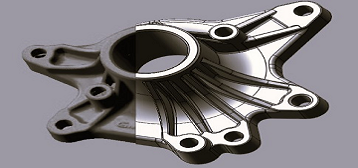 Reverse engineering is becoming an important aid in ensuring long-term functionality. In particular, it helps to understand, maintain and innovate systems and equipment in various industries by producing parts or components that are no longer manufactured, are in short supply, are specific or need to be improved. Very often these are parts from damaged machines, spare or atypical parts, or parts that are no longer manufactured and for which the original documentation or designs are missing.
Reverse engineering is becoming an important aid in ensuring long-term functionality. In particular, it helps to understand, maintain and innovate systems and equipment in various industries by producing parts or components that are no longer manufactured, are in short supply, are specific or need to be improved. Very often these are parts from damaged machines, spare or atypical parts, or parts that are no longer manufactured and for which the original documentation or designs are missing.
The clear benefits of reverse engineering include gaining technical knowledge, helping to reduce costs, ensuring compatibility, improving safety, rescuing obsolete technology and encouraging innovation.
The main benefits of reverse engineering are:
Analysis, understanding and education
Reverse engineering helps students, technicians and engineers understand how a system or device works. This can be particularly useful when the original documentation is not available.
Repair and maintenance:
Reverse engineering helps in identifying problems and repairing older equipment where original support is no longer available.
Innovation and Development:
Reverse engineering helps in innovation and new product development by providing information on existing technologies that can be improved or modified.
